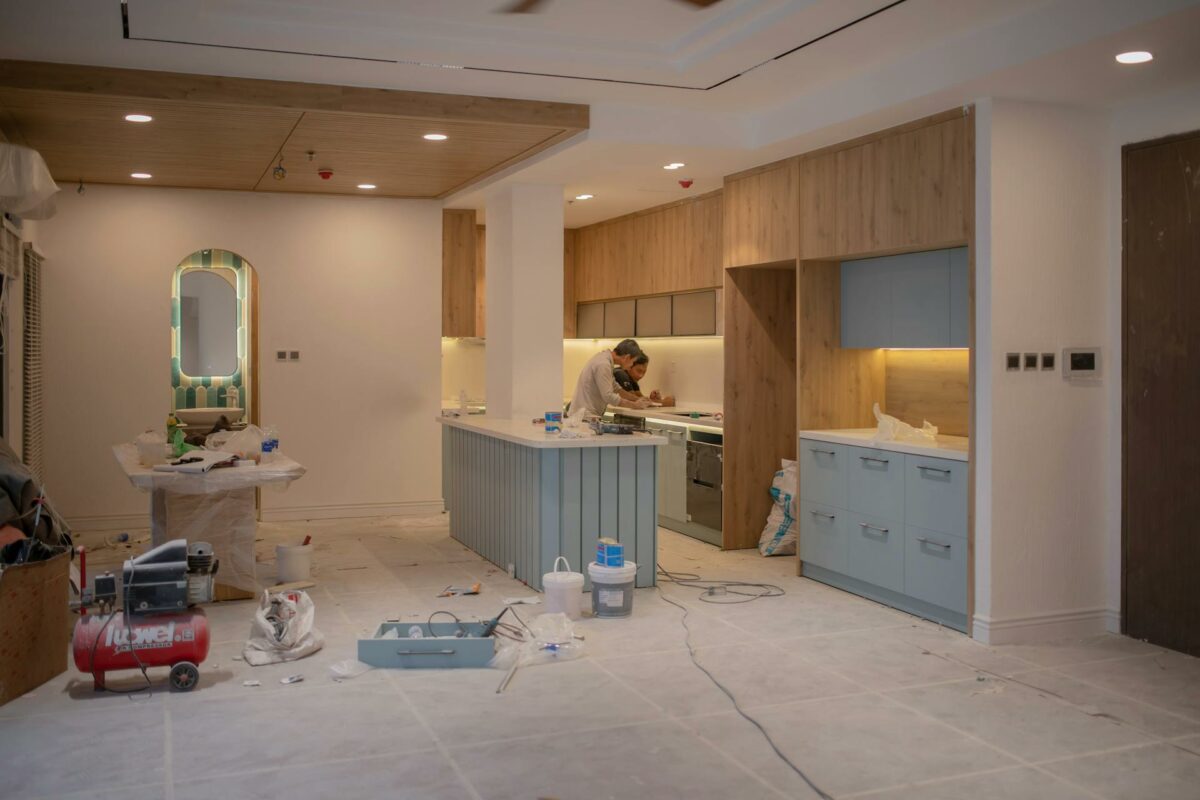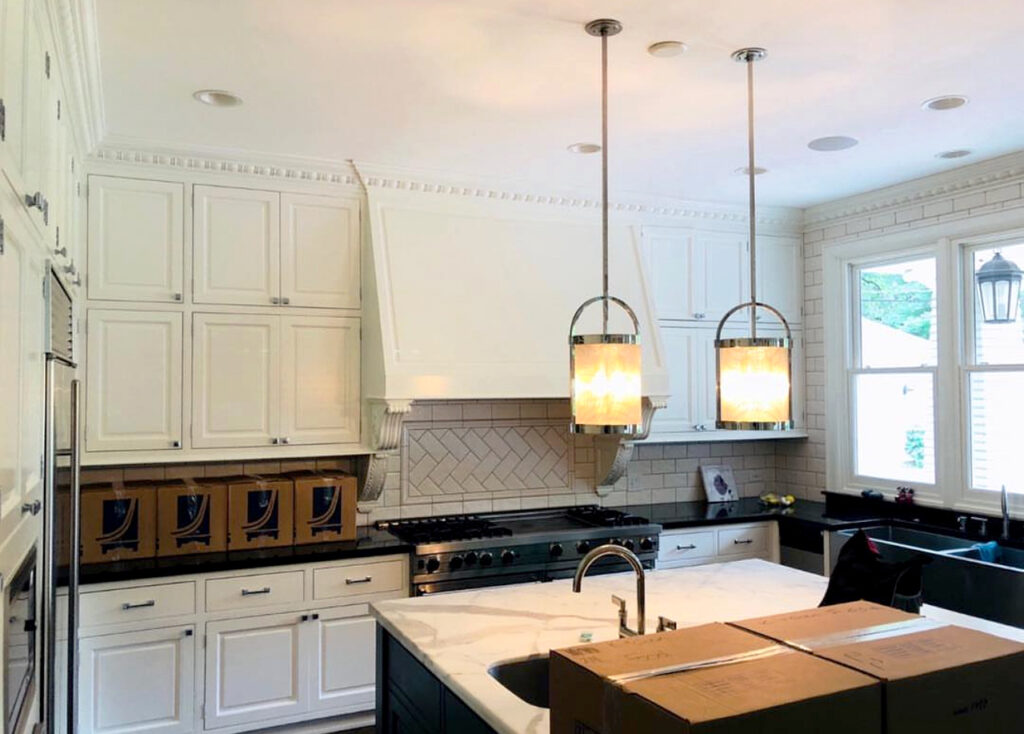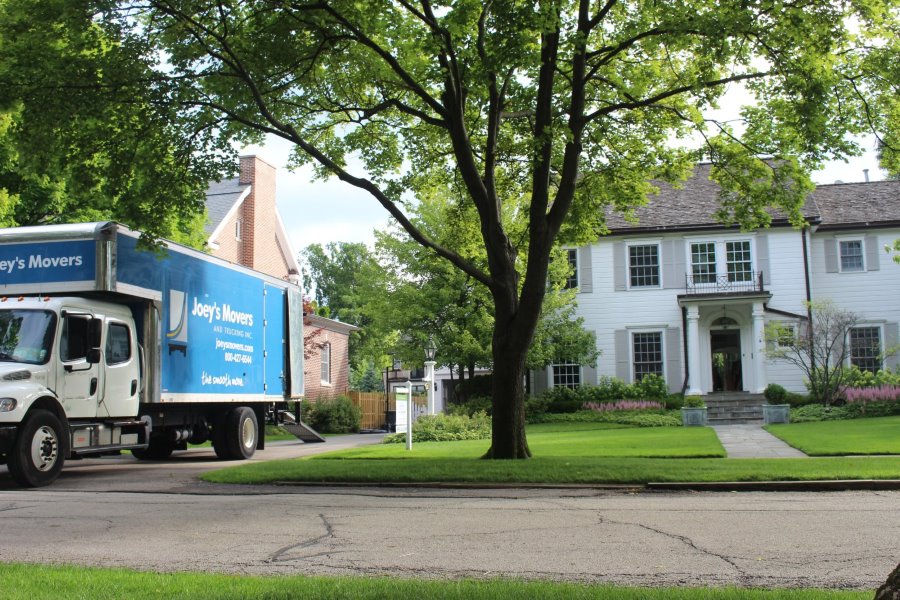Many homeowners struggle with the question, “Should I remodel my current home or move to a new one?”
In this guide, we’ll discuss the financial, emotional, and logistical factors that come into play when you choose to remodel or move. We also go the extra mile by sharing tips and insights based on our team’s experiences as a full-service moving company, including how relocations and temporary housing should factor into the decision.
The Key Considerations: When to Move and When to Renovate
Deciding to remodel your home or move to a new one involves more than just comparing costs. It also involves personal needs, unique circumstances, and market factors. Our experts at Joey’s Movers personally recommend the “Stay or Go” Decision Framework to help you decide what the best choice is for your unique situation.
The “Stay or Go” decision framework breaks down key factors into manageable categories. This helps you weigh your priorities objectively and consider various critical factors that are often overlooked.
Space Needs:
Start by evaluating whether your current home physically accommodates your lifestyle. Consider:
- Are you outgrowing your space, or is it just poorly configured?
- Do you need more bedrooms, bathrooms, storage, or home office space?
- Could your needs be met with layout changes or an addition?
- Would you have the space you need if you had help decluttering and packed away unneeded stuff into storage?
- How would things like local building codes, zoning laws, setback requirements, and HOA requirements limit your ability to adapt your home to fit your needs?
If remodeling is not a feasible way to meet your family’s space needs now or in the longer term, moving may be the better solution.
Financial Considerations
Compare all the financial costs when you renovate or buy a new house, including:
- Contractor estimates, permit costs, material prices, and potential overages
- The cost of moving services, including packing, transportation, storage, and other related fees
- Realtor commissions, mortgage changes, and closing costs
- How your current credit score will affect down payments and mortgage approvals.
- Long-term costs like property taxes, insurance, and maintenance
- The return on investment (ROI) for either choice based on current home values
Make sure to include other aspects in the true cost of moving or temporary relocation, like rent and hotel fees, living expenses, and moving trucks. Our moving checklist can help you get a feel for the tasks involved in relocating whenever you renovate or buy a new house.
Emotional Attachment
Homes and communities often hold strong emotional value. Ask yourself:
- Are you deeply attached to your current home, neighborhood, or community?
- Have you invested time and effort in making it “yours”?
- Would leaving feel like a loss or a relief?
If your current neighborhood is not a good fit for your needs, you may want to consider moving into one of your area’s best neighborhoods for families.
Current Market Conditions
Is it financially and strategically a good time to enter the real estate market? Or is it better to stay and invest in what you already own? Consider things like:
- Are home prices rising, steady, or falling?
- How long are homes staying on the market? Would you be able to sell your current home quickly and at a reasonable price?
- Are there suitable homes available that meet your needs and your budget?
- Do market experts predict anything unfavorable to you will last a long time?
If the market looks unfavorable for the foreseeable future, it may significantly impact whether you should remodel or buy a new house.
How Moving Companies View Home Renovations vs. Buying New
Moving professionals offer a unique perspective on this decision. We tend to see the real impact of these choices beyond the financial spreadsheet. Here are a few things we have learned from talking to our clients:
- Remodelers Often Move Within 5 Years. Many homeowners who invest in major renovations end up moving within a few years anyway. The renovation might fix an immediate issue, but it does not always eliminate the need to move entirely.
- People Frequently Underestimate the Stress of Renovation. Living in a construction zone can be very disruptive, and if you have to find temporary housing, the costs can rise dramatically. If you need to move stuff into storage and bring it back, you are effectively dealing with two moves instead of one. Moving is stressful as well, but it can be less emotionally taxing than a six-month kitchen remodel with unexpected delays.
- Renovations Require More Logistics Than Moving. Although renovations may seem easier, there are many moving parts that can cause delays, increased costs, and other stressful setbacks. For example, suppose a material shortage or a permit delay adds a month to your kitchen upgrade timeframe. In that case, it also means one month of disrupted lifestyles, additional storage fees, rescheduling issues, and the stress and cost of extending your temporary housing for that extra time.
- You Rarely Get 100% Return on Your Investment in Renovations. If you spend $50,000 on renovations on your home, it does not mean it will be worth $50,000 more when you sell it later. According to Remodeling Magazine’s 2024 Cost vs. Value Report, a minor kitchen remodel recoups a national average of 89.8% of its cost, while major kitchen overhauls yield a lower return of 43.1%. These numbers assume you are selling shortly after the remodel is done as well. The total amount recouped decreases with wear and tear.
Unless there are significant setbacks attached to moving, our experts recommend moving as the less stressful and more financially sound choice.
Cost of Remodeling vs Moving
The financial breakdown of home renovation and buying new is not as simple as comparing a contractor’s bid to a home’s listing price. Both choices include a wide range of hidden expenses, logistical fees, and long-term implications.
The True Cost of Remodeling
While renovating looks like the more affordable option at a glance, it has various layers and logistical factors to consider. Here are just a few:
- Construction Costs. Depending on your location and the scope of the project, remodeling costs can range from $15 to $60 per square foot. Expenses typically include labor, materials, permits, inspections, and design fees.
- Unexpected Expenses. Hidden structural costs, extra permits, logistical issues, and fluctuating material prices all add up as the project moves forward.
- Temporary Housing and Storage. If you need to relocate during the renovation, you need to deal with rent, storage, utilities for two locations, living expenses, and the fees and logistics of moving your stuff twice.
- Return on Investment (ROI). If you put money into a renovation, it does not add the same amount to your home’s value. This can be a costly money-sink if the upgrades do not fulfill your needs for the long term.
The True Cost of Moving
Buying a new home is exciting, but the costs often go far beyond the listing price. Here are a few things that you pay on top of the agreed price:
- Realtor Fees and Closing Costs. Fees, closing costs, insurance premiums, and mortgage adjustments can significantly increase the overall cost of the home.
- Living Expenses. Some areas have higher health and car insurance premiums, utility fees, or HOA costs attached. You may also face things like higher commute costs and a higher cost of living on essential goods.
- Moving Expenses. Hiring professional movers, renting a truck, packing materials, temporary storage, and all the other costs associated with the physical move add to the total cost of moving. For an accurate cost to move, call us at (847) 674-7779 or get an online quote.
- Finishing New Homes. Any new furniture to fit the space and renovations to make the home perfect all add to the total cost.
Lifestyle and Logistics
The decision to remodel or move isn’t only about money. Lifestyle needs, long-term goals, and everyday logistics can heavily influence what makes sense for your situation.
When Renovating Makes Sense
- When renovations offer long-term solutions to the issues that have tempted you to move in the first place.
- You love your neighborhood, school district, or community.
- If moving doesn’t offer substantial benefits like shorter commutes, better amenities, or more livable space.
- Your home has a stronger resell potential later.
- If your family is not ready for major changes in life logistics like school transferring, changing at-home healthcare providers, updating legal documents, and adjusting to new commutes and routines.
When Moving is the Smarter Option
- If the home’s layout isn’t fixable with renovations.
- If the new neighborhood is a better match for your family’s safety, education, work, and lifestyle needs.
- Zoning laws, building codes, and HOA ordinances may bar the renovations and extensions you need.
- Major structural repairs would make remodeling too expensive.
- When property values do not validate the costs of remodeling.
- When your family is ready for a fresh start.
The Stress Factor of Renovation
Both remodeling and moving come with lifestyle disruptions.
- Living in a construction zone involves daily dust, noise, and restricted space. It also involves many moving parts that cause constant changes and unexpected setbacks.
- Moving involves decluttering, packing, transportation, and weeks of re-establishing routines.
The better option depends on your tolerance for disruption and your ability to manage change.
It also depends on the types of disruptions and setbacks you are willing to deal with, and for how long.
Step-by-Step Guide to Making the Decision
If you’re still torn between remodeling and moving, you’re not alone. Here are some steps to take to narrow down your choices.
Take the “Remodel or Move” Quiz
Start by taking a simple self-assessment to clarify your needs, priorities, and limits. Open a note-taking app or grab a few sheets of paper to ask yourself the following questions.
- Space. Is your current home too small or poorly configured? Would a room addition or reconfiguration solve the problem, or is the available space simply too limited?
- Community.Are you emotionally attached to your home or your current community? Are there issues with the community, like safety or lifestyle clashes, that could be fixed by moving to a different neighborhood?
- Lifestyle Logistics. Would the places I am thinking of moving to offer significant benefits for the cost, like better schools, lower crime rates, shorter commutes, or amenities that support your lifestyle?
- Budget. Can you afford to remodel? Would moving put you in a better or worse financial position in both the short and long term?
- Stress Tolerance. How well can you (and your household) handle the disruption of living through a renovation versus the hassle of packing and moving?
- Market Conditions. Would you benefit more from selling now or staying put and building equity? Are there viable homes within the market for you to move to after your home sells?
- Future Goals: Are you planning to stay in the area long-term? If not, how will that affect the value of any remodeling investments?
If most of your answers favor staying and upgrading, remodeling may be the more logical route. If they lean toward dissatisfaction with your current home or strong opportunities elsewhere, moving might be the better choice.
Use a Renovate vs Move Calculator
Once you’ve identified your priorities, plug the numbers into a reliable calculator to visually see the difference in costs.
- Realtor.com’s Renovation Calculator can help a lot with estimating the costs and impact on your home’s value for various renovations.
- NerdWallet’s Renovation Cost Estimator provides the national average costs in a similar vein.
- Home Affordability Calculator can help you determine how much you can afford to put into a home and what kind of down payments and other upfront costs to expect.
- Joey’s Movers can provide a free quote to help you price the costs of decluttering, professional packers, and other logistics related to a move or relocating your valuables to storage for renovations.
- Once you have the numbers, you can plug them into a Renovate vs. Move calculator to get a side-by-side comparison.
Using these tools can help give you a clearer view of what the numbers actually look like.
Consult the Experts
Once you’ve finished your research, turn to relevant experts like real estate agents, contractors, and moving companies. They can spot details you might miss and give you grounded and professional advice based on your home and unique situation.
Real Estate Agents
An experienced agent can offer a comparative market analysis (CMA) to help you understand what your home is currently worth, how much you could reasonably expect after renovations, and what your budget could buy in today’s market. They can also advise whether now is a good time to sell based on local trends.
Contractors
A licensed contractor can provide a detailed estimate for your proposed renovation. More importantly, they can advise what’s possible based on your home’s structure, condition, and local regulations.
Moving Companies
Professional movers can give you an accurate breakdown of moving costs, timelines, and potential storage needs. Many also offer temporary storage, decluttering, packing assistance, and logistics you might need..
Financial Advisors or Mortgage Brokers
If you’re unsure how a remodel or new home purchase will impact your overall financial health, speak with someone who can review your mortgage, credit, and investment plans. A financial pro can help you assess risk, cash flow, and how long it might take to recover from the costs of either decision.
By the time you complete this step-by-step guide, you should have a clearer view of which direction aligns best with your goals, budget, and lifestyle.
Should You Remodel or Move?
Choosing whether to remodel or move depends on your current space, finances, and long-term goals. If you’re attached to your location and your home simply needs updates, remodeling could be the right fit. But if the layout no longer works, the repairs are extensive, or your needs have changed, moving may offer better value and convenience.
Many homeowners who remodel still end up moving within a few years. Use aremodel or movecalculator, take a self-assessment quiz, and speak with real estate agents, contractors, and moving companies to ensure you are making the best choice for your situation.
Do you have questions about the costs of moving or need help preparing your home for renovation? Call Joey’s Movers today at (847) 674-7779 or get a free online quote. You’re just a step away from a smooth move.
Photo by Thới Nam Cao




